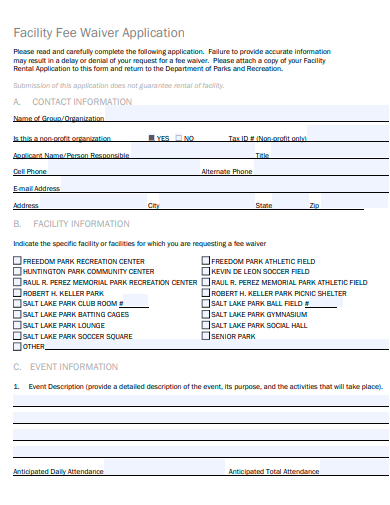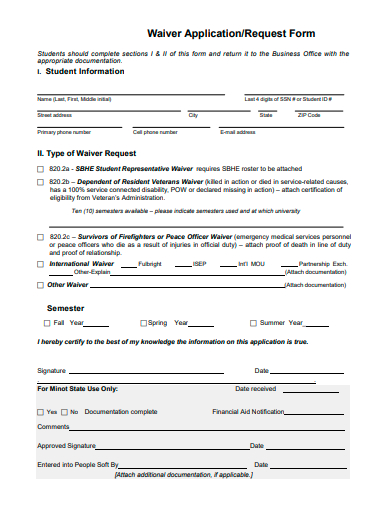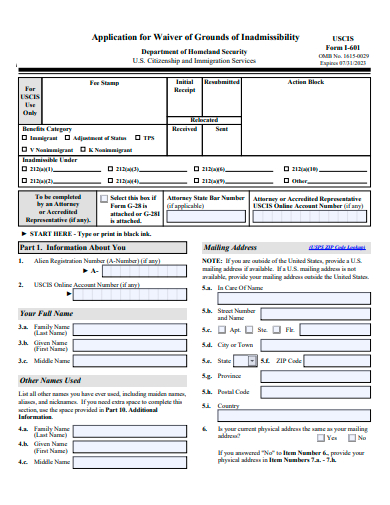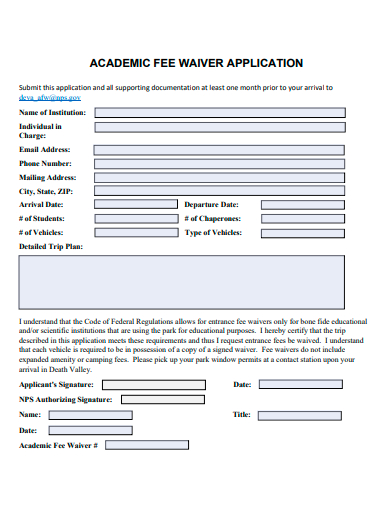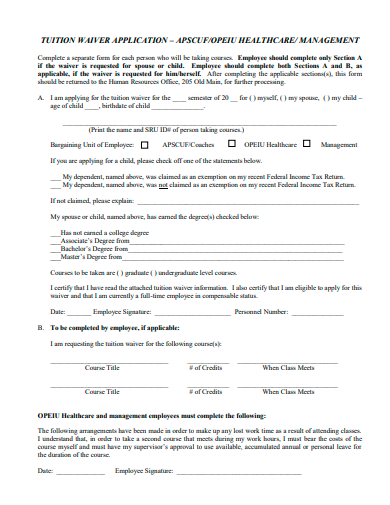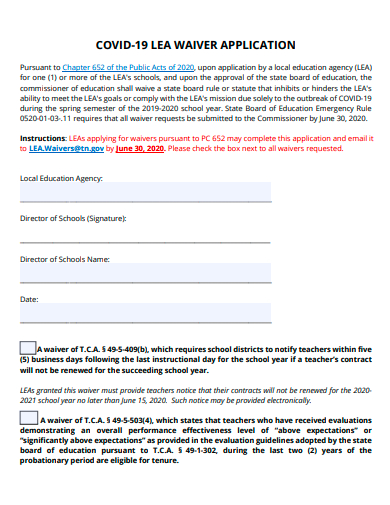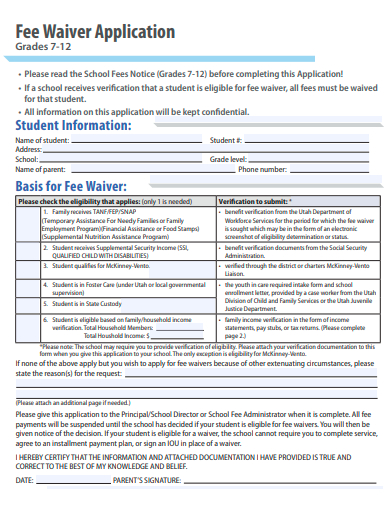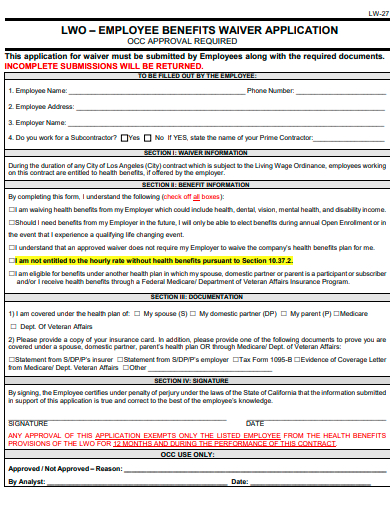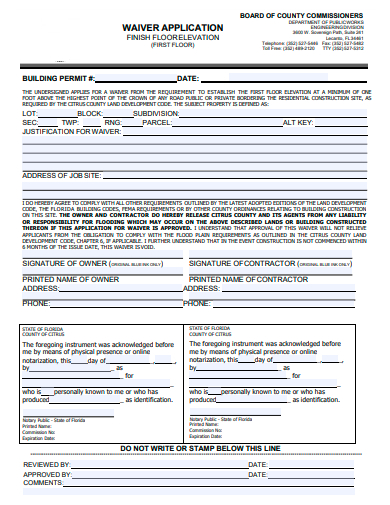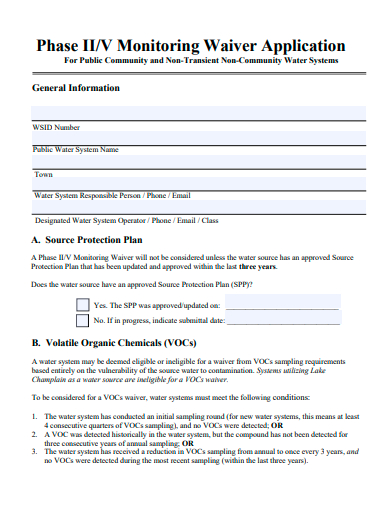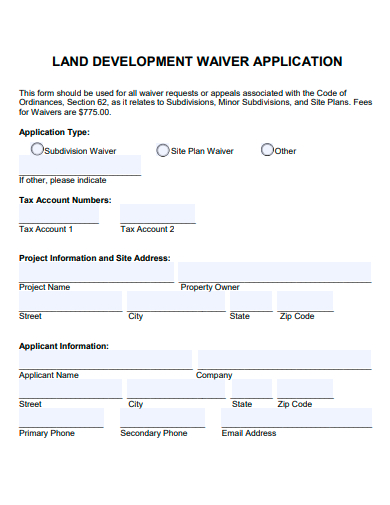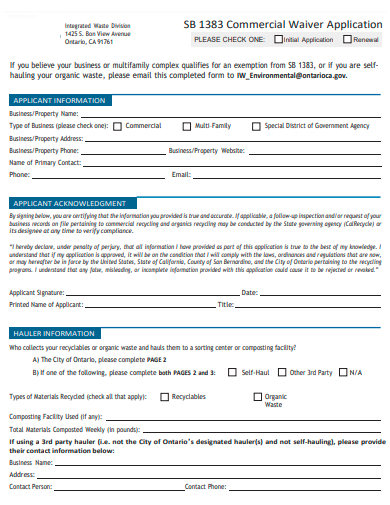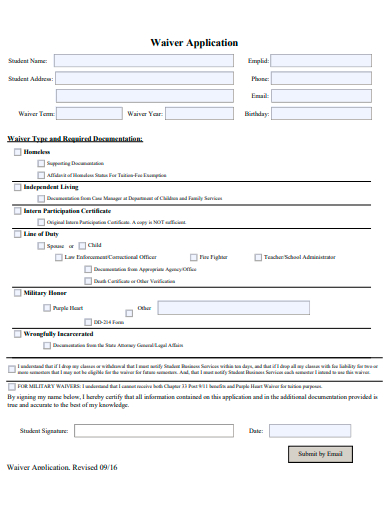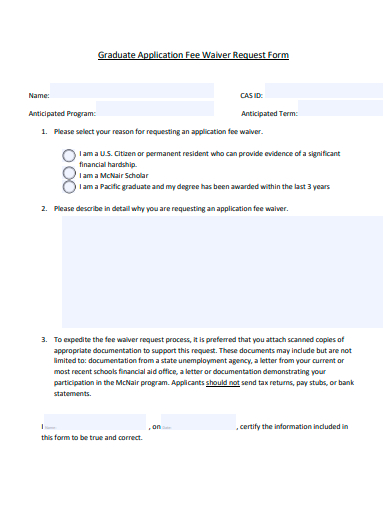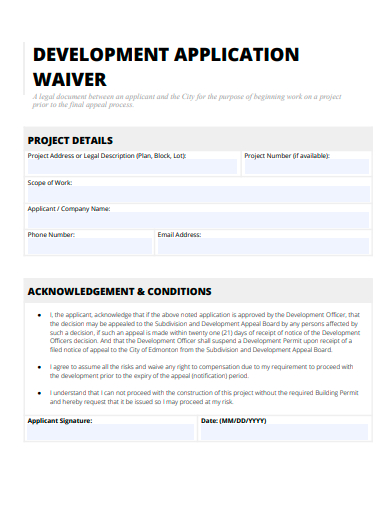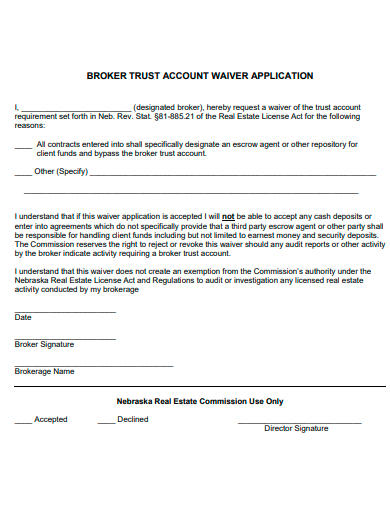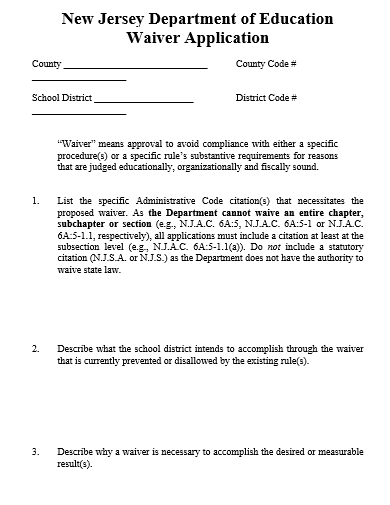The term waiver is a word that refers to forgoing an interest or right by unintentionally or intentionally choosing to let go of an opportunity to enforce it. A waiver clause in a contract agreement provides the specifics on the process in which a party can waive their right and the consequences of this choice. A waiver is a legally binding document that is commonly used during negotiations.
20+ Waiver Application Samples
1. Facility Fee Waiver Application Template
2. Waiver Application Template
3. Annual Assessment Waiver Application Template
4. Sample Waiver of Grounds Application Template
5. Academic Fee Waiver Application Template
6. Sample Waiver Application Template
7. Sample Tuition Waiver Application Template
8. Covid-19 Waiver Application Template
9. Fee Waiver Application Template
10. Employee Benefits Waiver Application Template
11. Basic Waiver Application Template
12. Monitoring Waiver Application Template
13. Land Development Waiver Application Template
14. Commercial Waiver Application Template
15. Waiver Application in PDF
16. Sample Waiver Request Application Template
17. Graduate Application Fee Waiver Request Form Template
18. Sample Waiver Application Form Template
19. Waiver Development Application Template
20. Broker Trust Account Waiver Application Template
21. Waiver Application in DOC
What is a Waiver Application?
A waiver is a written legal document that involves two parties who agrees to intentionally waive their claim or legal right without the other party being liable. Companies can use waiver of liability agreements, waiver request forms, liability waiver forms, lien waiver forms, and more. Business agreements also include the participants’ signing of liability forms or release forms to relieve them of liabilities.
How to Write a Waiver Application
An application letter or form for a waiver is a written request sent to a party to forgo a particular restriction that will be put into effect like financial responsibilities, business contracts, or citations. Waivers are usually written when risks are associated with an organization’s products and services and it seeks to limit its liability like businesses that provides risky activities such as extreme sports and recreational activities to its customers.
Step 1: Write the Letter Using a Business Format
Start your writing process by using a formal business letter format to present your content in a professional manner. You can use letterhead if necessary or lead the letter with your address and date of writing, your receiver’s name, title, company, and address.
Step 2: Be Direct and State Your Purpose
Make sure that your letter is direct but not too short. Provide the message clearly while making your points persuasive and convincing. Then, write a statement that tells the purpose or reason why you are writing an application letter for a waiver.
Step 3: Provide an Explanation of Your Reasons
In the next paragraph, write one or two sentences that explain why you are waiving your rights or claim and the reason for your request.
Step 4: Conclude the Waiver Application Letter
Write your closing statement or paragraph in a polite manner by adding a sentence or two that concisely restates the explanation of your reason for writing to your concluding paragraph. Use the appropriate sign-off with your full name, title, and company name if necessary.
FAQs
What are the businesses that commonly use a waiver?
Waivers are commonly used in businesses and industries such as medical practices, businesses that provide skin, facial, and beauty treatment plans, and businesses that offer extreme sports and activities.
What are the different kinds of waiver clauses?
The different varieties of waiver clauses include affirmative waivers, general waiver prohibitions, written waivers, course of dealing waivers, and complete non-waivers.
What are the best practices for writing waiver clauses?
When writing waiver clauses, be knowledgeable of the different types of waivers before writing one, decide whether to waive your rights or enforce them in case of a breach of contract, put your intention in writing and deliver it to the other party, and make sure that the breaching party has signed the document to acknowledge mutual consent.
A waiver, also known as a release form, is a document that contains detailed information about an agreement between two parties. When this document is signed, the releasor acknowledges the risks that come with the agreement and promises not to sue the other party for any damages. This document contains the signature of both parties, the particulars of the event, the date, and possible offers or compensation.
Related Posts
FREE 20+ Sample High School Application Form Templates in PDF
FREE 17+ Referral Application Samples in MS Word | PDF
FREE 14+ Admission Application Samples in MS Word | Apple Pages | PDF
FREE 20+ University Application Samples in MS Word | Google Docs | PDF
FREE 29+ Student Application Form Samples in PDF | MS Word
FREE 21+ Administrative Application Samples in MS Word | Apple Pages | PDF
FREE 21+ Teacher Application Samples in MS Word | Apple Pages | Outlook | PDF
FREE 25+ Transfer Application Samples in MS Word | Apple Pages | PDF
FREE 23+ Participation Application Samples in MS Word | PDF
FREE 14+ Patient Application Samples in MS Word | PDF
FREE 21+ Eligibility Application Samples in PDF
FREE 20+ Travel Application Samples in PDF | MS Word
FREE 25+ Sponsor Application Sampales in MS Word | Google Docs | Apple Pages | PDF
FREE 23+ Candidate Application Samples in PDF
FREE 33+ Committee Application Samples in PDF | MS Word

